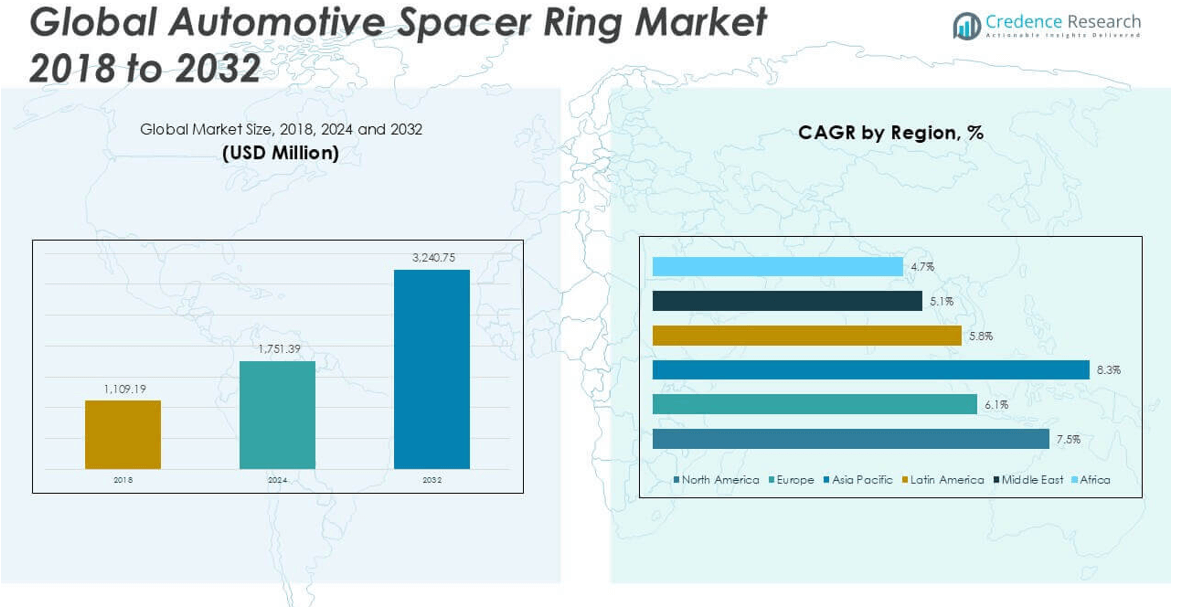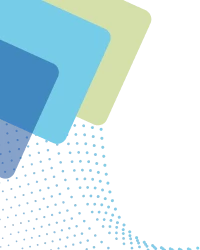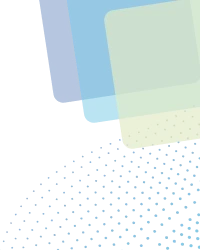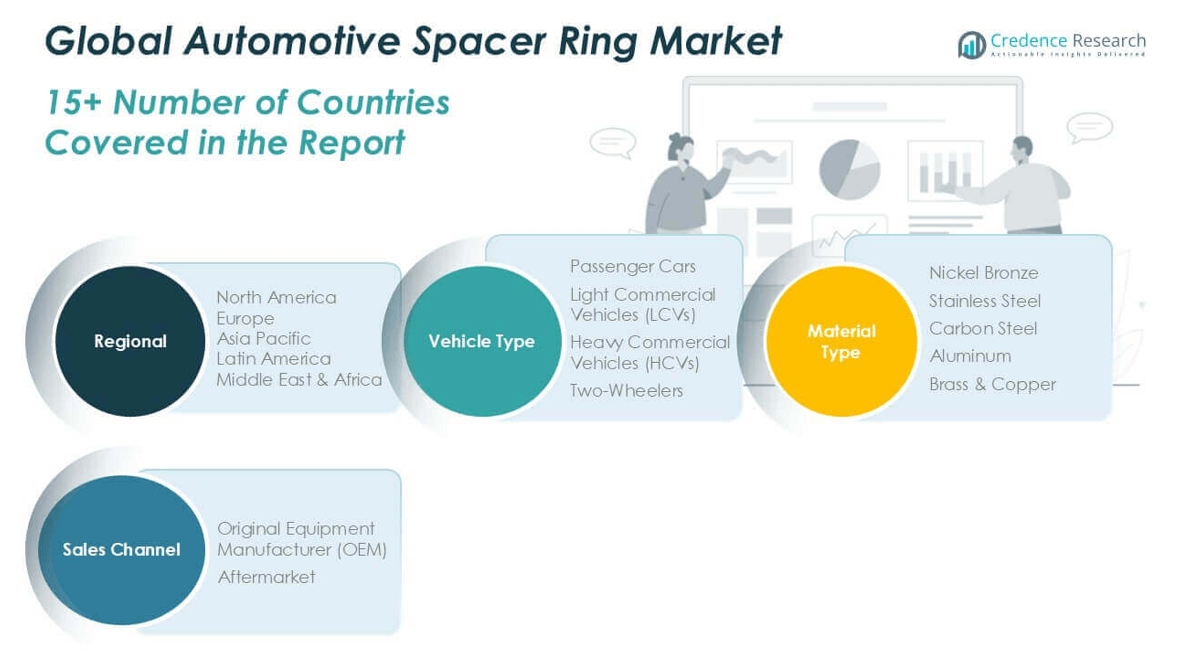CHAPTER NO. 1 : GENESIS OF THE MARKET
1.1 Market Prelude – Introduction & Scope
1.2 The Big Picture – Objectives & Vision
1.3 Strategic Edge – Unique Value Proposition
1.4 Stakeholder Compass – Key Beneficiaries
CHAPTER NO. 2 : EXECUTIVE LENS
2.1 Pulse of the Industry – Market Snapshot
2.2 Growth Arc – Revenue Projections (USD Million)
2.3. Premium Insights – Based on Primary Interviews
CHAPTER NO. 3 : AUTOMOTIVE SPACER RING MARKET FORCES & INDUSTRY PULSE
3.1 Foundations of Change – Market Overview
3.2 Catalysts of Expansion – Key Market Drivers
3.2.1 Momentum Boosters – Growth Triggers
3.2.2 Innovation Fuel – Disruptive Technologies
3.3 Headwinds & Crosswinds – Market Restraints
3.3.1 Regulatory Tides – Compliance Challenges
3.3.2 Economic Frictions – Inflationary Pressures
3.4 Untapped Horizons – Growth Potential & Opportunities
3.5 Strategic Navigation – Industry Frameworks
3.5.1 Market Equilibrium – Porter’s Five Forces
3.5.2 Ecosystem Dynamics – Value Chain Analysis
3.5.3 Macro Forces – PESTEL Breakdown
3.6 Price Trend Analysis
3.6.1 Regional Price Trend
3.6.2 Price Trend by Product
CHAPTER NO. 4 : KEY INVESTMENT EPICENTER
4.1 Regional Goldmines – High-Growth Geographies
4.2 Product Frontiers – Lucrative Product Categories
4.3 Application Sweet Spots – Emerging Demand Segments
CHAPTER NO. 5: REVENUE TRAJECTORY & WEALTH MAPPING
5.1 Momentum Metrics – Forecast & Growth Curves
5.2 Regional Revenue Footprint – Market Share Insights
5.3 Segmental Wealth Flow – Vehicle Type & Material Type Revenue
CHAPTER NO. 6 : TRADE & COMMERCE ANALYSIS
6.1. Import Analysis by Region
6.1.1. Global Automotive Spacer Ring Market Import Volume By Region
6.2. Export Analysis by Region
6.2.1. Global Automotive Spacer Ring Market Export Volume By Region
CHAPTER NO. 7 : COMPETITION ANALYSIS
7.1. Company Market Share Analysis
7.1.1. Global Automotive Spacer Ring Market: Company Market Share
7.1. Global Automotive Spacer Ring Market Company Volume Market Share
7.2. Global Automotive Spacer Ring Market Company Revenue Market Share
7.3. Strategic Developments
7.3.1. Acquisitions & Mergers
7.3.2. New Vehicle Type Launch
7.3.3. Regional Expansion
7.4. Competitive Dashboard
7.5. Company Assessment Metrics, 2024
CHAPTER NO. 8 : AUTOMOTIVE SPACER RING MARKET – BY VEHICLE TYPE SEGMENT ANALYSIS
8.1. Automotive Spacer Ring Market Overview by Vehicle Type Segment
8.1.1. Automotive Spacer Ring Market Volume Share By Vehicle Type
8.1.2. Automotive Spacer Ring Market Revenue Share By Vehicle Type
8.2. Passenger Cars
8.3. Light Commercial Vehicles (LCVs)
8.4. Heavy Commercial Vehicles (HCVs)
8.5. Two-Wheelers
CHAPTER NO. 9 : AUTOMOTIVE SPACER RING MARKET – BY MATERIAL TYPE SEGMENT ANALYSIS
9.1. Automotive Spacer Ring Market Overview by Material Type Segment
9.1.1. Automotive Spacer Ring Market Volume Share By Material Type
9.1.2. Automotive Spacer Ring Market Revenue Share By Material Type
9.2. Nickel Bronze
9.3. Stainless Steel
9.4. Carbon Steel
9.5. Aluminum
9.6. Brass & Copper
CHAPTER NO. 10 : AUTOMOTIVE SPACER RING MARKET – BY SALES CHANNEL SEGMENT ANALYSIS
10.1. Automotive Spacer Ring Market Overview by Sales Channel Segment
10.1.1. Automotive Spacer Ring Market Volume Share By Sales Channel
10.1.2. Automotive Spacer Ring Market Revenue Share By Sales Channel
10.2. Original Equipment Manufacturer (OEM)
10.3. Aftermarket
CHAPTER NO. 11 : AUTOMOTIVE SPACER RING MARKET – REGIONAL ANALYSIS
11.1. Automotive Spacer Ring Market Overview by Region Segment
11.1.1. Global Automotive Spacer Ring Market Volume Share By Region
11.1.2. Global Automotive Spacer Ring Market Revenue Share By Region
11.1.3. Regions
11.1.4. Global Automotive Spacer Ring Market Volume By Region
11.1.5. Global Automotive Spacer Ring Market Revenue By Region
11.1.6. Vehicle Type
11.1.7. Global Automotive Spacer Ring Market Volume By Vehicle Type
11.1.8. Global Automotive Spacer Ring Market Revenue By Vehicle Type
11.1.9. Material Type
11.1.10. Global Automotive Spacer Ring Market Volume By Material Type
11.1.11. Global Automotive Spacer Ring Market Revenue By Material Type
11.1.12. Sales Channel
11.1.13. Global Automotive Spacer Ring Market Volume By Sales Channel
11.1.14. Global Automotive Spacer Ring Market Revenue By Sales Channel
CHAPTER NO. 12 : NORTH AMERICA AUTOMOTIVE SPACER RING MARKET – COUNTRY ANALYSIS
12.1. North America Automotive Spacer Ring Market Overview by Country Segment
12.1.1. North America Automotive Spacer Ring Market Volume Share By Region
12.1.2. North America Automotive Spacer Ring Market Revenue Share By Region
12.2. North America
12.2.1. North America Automotive Spacer Ring Market Volume By Country
12.2.2. North America Automotive Spacer Ring Market Revenue By Country
12.2.3. Vehicle Type
12.2.4. North America Automotive Spacer Ring Market Volume By Vehicle Type
12.2.5. North America Automotive Spacer Ring Market Revenue By Vehicle Type
12.2.6. Material Type
12.2.7. North America Automotive Spacer Ring Market Volume By Material Type
12.2.8. North America Automotive Spacer Ring Market Revenue By Material Type
12.2.9. Sales Channel
12.2.10. North America Automotive Spacer Ring Market Volume By Sales Channel
12.2.11. North America Automotive Spacer Ring Market Revenue By Sales Channel
12.3. U.S.
12.4. Canada
12.5. Mexico
CHAPTER NO. 13 : EUROPE AUTOMOTIVE SPACER RING MARKET – COUNTRY ANALYSIS
13.1. Europe Automotive Spacer Ring Market Overview by Country Segment
13.1.1. Europe Automotive Spacer Ring Market Volume Share By Region
13.1.2. Europe Automotive Spacer Ring Market Revenue Share By Region
13.2. Europe
13.2.1. Europe Automotive Spacer Ring Market Volume By Country
13.2.2. Europe Automotive Spacer Ring Market Revenue By Country
13.2.3. Vehicle Type
13.2.4. Europe Automotive Spacer Ring Market Volume By Vehicle Type
13.2.5. Europe Automotive Spacer Ring Market Revenue By Vehicle Type
13.2.6. Material Type
13.2.7. Europe Automotive Spacer Ring Market Volume By Material Type
13.2.8. Europe Automotive Spacer Ring Market Revenue By Material Type
13.2.9. Sales Channel
13.2.10. Europe Automotive Spacer Ring Market Volume By Sales Channel
13.2.11. Europe Automotive Spacer Ring Market Revenue By Sales Channel
13.3. UK
13.4. France
13.5. Germany
13.6. Italy
13.7. Spain
13.8. Russia
13.9. Rest of Europe
CHAPTER NO. 14 : ASIA PACIFIC AUTOMOTIVE SPACER RING MARKET – COUNTRY ANALYSIS
14.1. Asia Pacific Automotive Spacer Ring Market Overview by Country Segment
14.1.1. Asia Pacific Automotive Spacer Ring Market Volume Share By Region
14.1.2. Asia Pacific Automotive Spacer Ring Market Revenue Share By Region
14.2. Asia Pacific
14.2.1. Asia Pacific Automotive Spacer Ring Market Volume By Country
14.2.2. Asia Pacific Automotive Spacer Ring Market Revenue By Country
14.2.3. Vehicle Type
14.2.4. Asia Pacific Automotive Spacer Ring Market Volume By Vehicle Type
14.2.5. Asia Pacific Automotive Spacer Ring Market Revenue By Vehicle Type
14.2.6. Material Type
14.2.7. Asia Pacific Automotive Spacer Ring Market Volume By Material Type
14.2.8. Asia Pacific Automotive Spacer Ring Market Revenue By Material Type
14.2.9. Sales Channel
14.2.10. Asia Pacific Automotive Spacer Ring Market Volume By Sales Channel
14.2.11. Asia Pacific Automotive Spacer Ring Market Revenue By Sales Channel
14.3. China
14.4. Japan
14.5. South Korea
14.6. India
14.7. Australia
14.8. Southeast Asia
14.9. Rest of Asia Pacific
CHAPTER NO. 15 : LATIN AMERICA AUTOMOTIVE SPACER RING MARKET – COUNTRY ANALYSIS
15.1. Latin America Automotive Spacer Ring Market Overview by Country Segment
15.1.1. Latin America Automotive Spacer Ring Market Volume Share By Region
15.1.2. Latin America Automotive Spacer Ring Market Revenue Share By Region
15.2. Latin America
15.2.1. Latin America Automotive Spacer Ring Market Volume By Country
15.2.2. Latin America Automotive Spacer Ring Market Revenue By Country
15.2.3. Vehicle Type
15.2.4. Latin America Automotive Spacer Ring Market Volume By Vehicle Type
15.2.5. Latin America Automotive Spacer Ring Market Revenue By Vehicle Type
15.2.6. Material Type
15.2.7. Latin America Automotive Spacer Ring Market Volume By Material Type
15.2.8. Latin America Automotive Spacer Ring Market Revenue By Material Type
15.2.9. Sales Channel
15.2.10. Latin America Automotive Spacer Ring Market Volume By Sales Channel
15.2.11. Latin America Automotive Spacer Ring Market Revenue By Sales Channel
15.3. Brazil
15.4. Argentina
15.5. Rest of Latin America
CHAPTER NO. 16 : MIDDLE EAST AUTOMOTIVE SPACER RING MARKET – COUNTRY ANALYSIS
16.1. Middle East Automotive Spacer Ring Market Overview by Country Segment
16.1.1. Middle East Automotive Spacer Ring Market Volume Share By Region
16.1.2. Middle East Automotive Spacer Ring Market Revenue Share By Region
16.2. Middle East
16.2.1. Middle East Automotive Spacer Ring Market Volume By Country
16.2.2. Middle East Automotive Spacer Ring Market Revenue By Country
16.2.3. Vehicle Type
16.2.4. Middle East Automotive Spacer Ring Market Volume By Vehicle Type
16.2.5. Middle East Automotive Spacer Ring Market Revenue By Vehicle Type
16.2.6. Material Type
16.2.7. Middle East Automotive Spacer Ring Market Volume By Material Type
16.2.8. Middle East Automotive Spacer Ring Market Revenue By Material Type
16.2.9. Sales Channel
16.2.10. Middle East Automotive Spacer Ring Market Volume By Sales Channel
16.2.11. Middle East Automotive Spacer Ring Market Revenue By Sales Channel
16.3. GCC Countries
16.4. Israel
16.5. Turkey
16.6. Rest of Middle East
CHAPTER NO. 17 : AFRICA AUTOMOTIVE SPACER RING MARKET – COUNTRY ANALYSIS
17.1. Africa Automotive Spacer Ring Market Overview by Country Segment
17.1.1. Africa Automotive Spacer Ring Market Volume Share By Region
17.1.2. Africa Automotive Spacer Ring Market Revenue Share By Region
17.2. Africa
17.2.1. Africa Automotive Spacer Ring Market Volume By Country
17.2.2. Africa Automotive Spacer Ring Market Revenue By Country
17.2.3. Vehicle Type
17.2.4. Africa Automotive Spacer Ring Market Volume By Vehicle Type
17.2.5. Africa Automotive Spacer Ring Market Revenue By Vehicle Type
17.2.6. Material Type
17.2.7. Africa Automotive Spacer Ring Market Volume By Material Type
17.2.8. Africa Automotive Spacer Ring Market Revenue By Material Type
17.2.9. Sales Channel
17.2.10. Africa Automotive Spacer Ring Market Volume By Sales Channel
17.2.11. Africa Automotive Spacer Ring Market Revenue By Sales Channel
17.3. South Africa
17.4. Egypt
17.5. Rest of Africa
CHAPTER NO. 18 : COMPANY PROFILES
18.1. Schaeffler AG
18.1.1. Company Overview
18.1.2. Vehicle Type Portfolio
18.1.3. Financial Overview
18.1.4. Recent Developments
18.1.5. Growth Strategy
18.1.6. SWOT Analysis
18.2. SKF Group
18.3. NTN Corporation
18.4. Timken Company
18.5. NSK Ltd.
18.6. Sick AG
18.7. SPIROL
18.8. KnitMesh Technologies
18.9. WADE Drains
18.10. Eaton




















